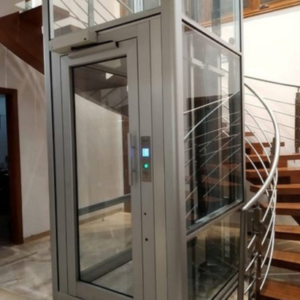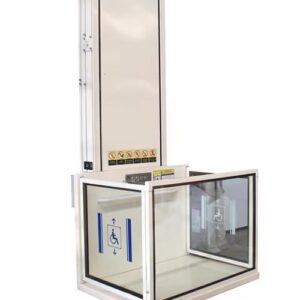Pneumatic Lift Elevator
A pneumatic lift elevator operates using air pressure, eliminating the need for cables or counterweights. Its sleek, transparent design makes it ideal for homes and small spaces. With smooth and quiet operation, minimal maintenance, and energy efficiency, it provides a modern, safe, and stylish vertical transportation solution.
Product Description
Pneumatic Lift Elevator
A pneumatic lift elevator is a modern vertical transportation system that operates using air pressure. Unlike traditional elevators that use cables or hydraulic systems, pneumatic elevators rely on a vacuum mechanism to move the cabin up and down through a cylindrical tube. These elevators are compact, energy-efficient, and easy to install, making them ideal for homes, small commercial spaces, and buildings with structural limitations.
How Pneumatic Elevators Work
Pneumatic elevators create air pressure differences to move the cabin between floors. The system includes a sealed tube, a lightweight cabin, and a vacuum pump at the top. When activated to ascend, the system reduces air pressure above the cabin, allowing atmospheric pressure below to push it upward. For the descent, the vacuum system releases air gradually, enabling a smooth and controlled movement.
This system eliminates the need for counterweights, cables, or a machine room, making installation simpler and cost-effective. Its design is especially beneficial for buildings where structural modifications are not feasible.
Design and Features
Pneumatic elevators have a sleek, futuristic look, often featuring a transparent or semi-transparent cylindrical shaft. The cabin, made of high-strength polycarbonate or glass, provides a panoramic view while traveling.
These elevators are compact, typically accommodating one to three passengers. Installation is quick since they don’t require deep pits or overhead machinery.
Advanced features include smooth and silent operation, automatic doors, emergency brakes, and backup power for safety during power outages. Some models also come with smart controls, allowing operation through touch-screen panels or remote controls.
Safety and Efficiency
Safety is a top priority in pneumatic elevators. An automatic braking system engages if air pressure drops suddenly. In case of a power failure, the cabin descends slowly to the ground floor, ensuring passenger safety. The lightweight design reduces mechanical failures, increasing reliability.
These elevators consume minimal energy, especially during descent, which relies on gravity and controlled air release. With no hydraulic fluids or heavy machinery, maintenance costs are lower, and environmental impact is minimal. This makes pneumatic elevators a sustainable alternative to traditional systems.













Reviews
There are no reviews yet.